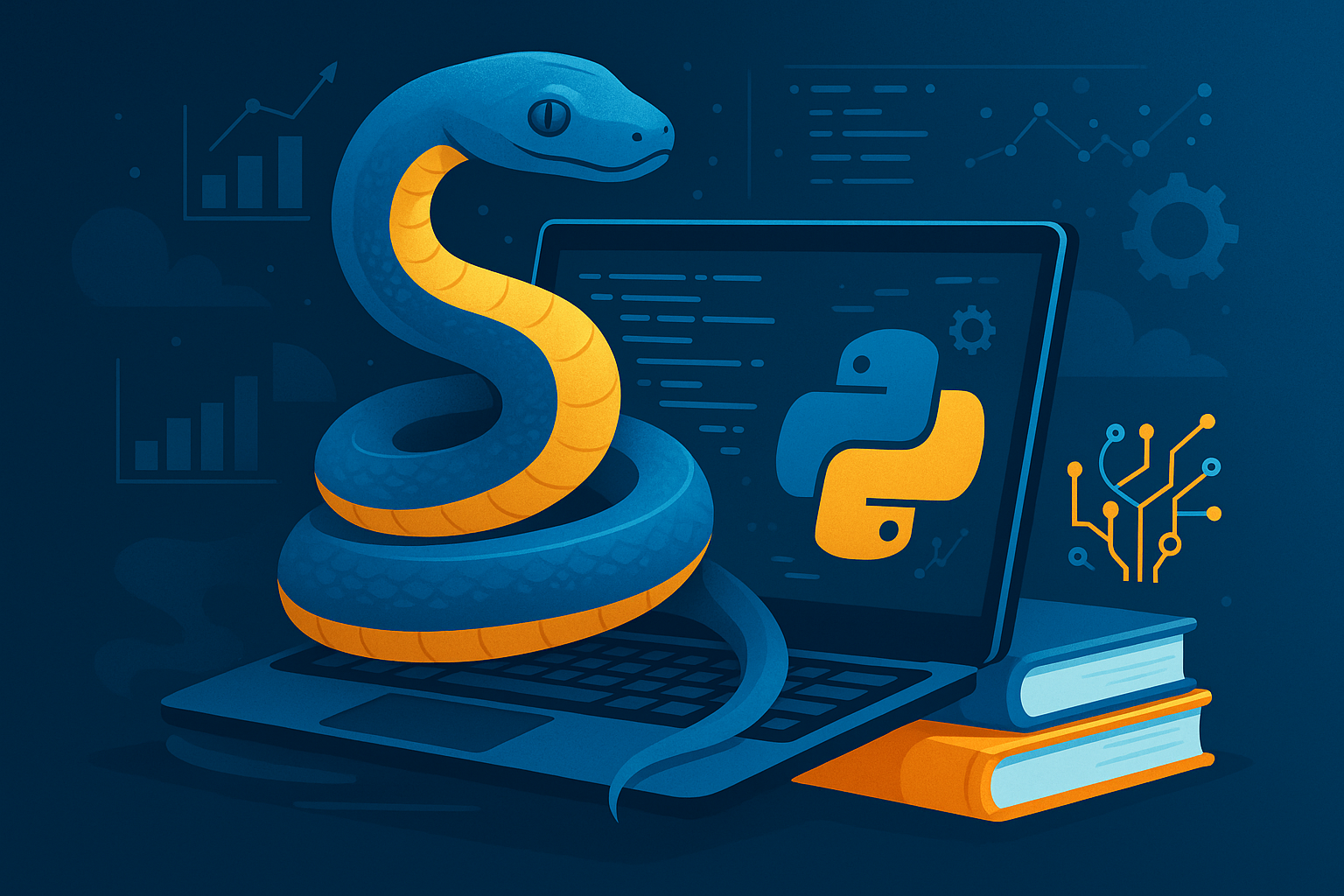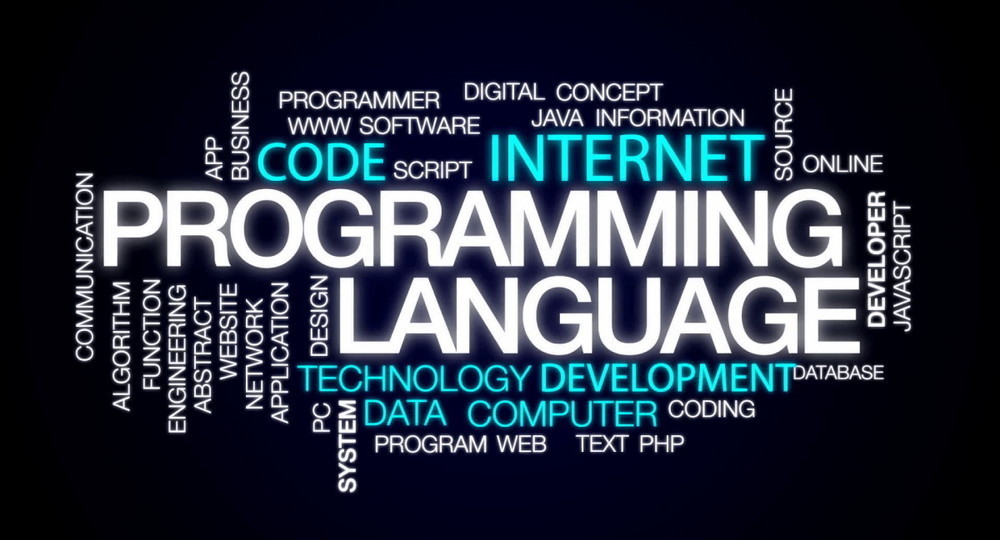Staying ahead in the tech industry demands knowing which programming languages will define the next wave of innovation. As we move into 2025, businesses are embracing cutting-edge technologies—like AI, cloud computing, blockchain, and IoT—all of which rely on robust coding solutions. Whether you’re a seasoned developer, a startup founder, or an enterprise-level CTO, understanding which languages are poised to dominate can inform hiring decisions, project planning, and professional development.
In this article, we’ll explore the top 10 in-demand programming languages for 2025, discussing their core strengths, primary use cases, and industry trends driving their popularity.
The rise of large language models (LLMs), edge computing, and privacy-first architectures is also reshaping what “in-demand” really means. It’s no longer just about raw popularity; it’s about which languages sit at the intersection of productivity, performance, security, and ecosystem maturity.
The rise of large language models (LLMs), edge computing, and privacy-first architectures is also reshaping what “in-demand” really means. It’s no longer just about raw popularity; it’s about which languages sit at the intersection of productivity, performance, security, and ecosystem maturity.

Table of Contents
1. Python

Why Python Continues to Thrive
Python remains a go-to choice for many developers due to its readable syntax, flexibility, and versatile application range. In 2025, it’s expected to maintain its popularity, especially in data science, machine learning, and web development.
Python is also deeply embedded in the LLM and MLOps ecosystem, powering tooling, evaluation pipelines, and integrations around models like GPT and open-source alternatives.
Python is also deeply embedded in the LLM and MLOps ecosystem, powering tooling, evaluation pipelines, and integrations around models like GPT and open-source alternatives.
Key Strengths
- Extensive Libraries: Packages like NumPy, Pandas, and TensorFlow speed up AI and data-focused projects.
- Beginner-Friendly: A clear, concise syntax makes it ideal for newcomers and rapid prototyping.
- Cross-Platform Compatibility: Runs smoothly on Windows, macOS, Linux, and more.
Popular Use Cases
- Data Analysis: From large-scale analytics to real-time dashboards.
- AI & Machine Learning: Empowered by frameworks such as PyTorch and TensorFlow.
- Automation & Scripting: Ideal for quick script-based solutions.
Why It’s In Demand: As AI and data science continue to explode in scope, Python’s ease-of-use and robust ecosystem make it a top language for cutting-edge tech solutions.
2. JavaScript
The Ubiquitous Language of the Web
JavaScript remains at the heart of web development, enabling dynamic interactions on billions of websites. With the rise of single-page applications (SPAs), Node.js, and progressive web apps (PWAs), JavaScript’s reach now extends from front-end to back-end and even serverless architectures.
Key Strengths
- Versatility: Used for both client-side (React, Vue.js) and server-side (Node.js) scripting.
- Vast Community: Supported by millions of developers and continuous updates in the ECMAScript standard.
- Rapid Development: Libraries like Next.js, Express.js, and Gatsby streamline production.
Popular Use Cases
- Front-End Development: Building responsive, interactive user interfaces.
- Back-End Services: RESTful APIs, real-time applications (e.g., chat apps).
- Full-Stack Projects: A single language powering the entire tech stack.
Why It’s In Demand: JavaScript’s ecosystem never stops evolving. With frameworks like React, Angular, and Vue, web development remains a hot job market, ensuring JavaScript’s continued relevance.
In 2025, JavaScript also underpins many cross-platform solutions (React Native, Electron, Tauri), making it a strategic skill for teams that want to ship web, desktop, and mobile experiences from a shared base.
In 2025, JavaScript also underpins many cross-platform solutions (React Native, Electron, Tauri), making it a strategic skill for teams that want to ship web, desktop, and mobile experiences from a shared base.
3. Go (Golang)
Google’s Brainchild for High-Performance Services
Go (or Golang), created by Google, focuses on simplicity, concurrency, and efficiency. It’s quickly becoming the language of choice for cloud-native applications, microservices, and infrastructure tools.
Key Strengths
- Built-In Concurrency: Goroutines and channels simplify parallel processing.
- Fast Compilation: Rapid build times suit continuous integration pipelines.
- Robust Standard Library: Minimizes the need for external dependencies.
Popular Use Cases
- Microservices Architecture: Ideal for distributed systems requiring lightweight and modular setups.
- Cloud Infrastructure: Widely used for CLI tools, Kubernetes-related projects, and DevOps automation.
- High-Performance APIs: Excellent for data-intensive or real-time web services.
Why It’s In Demand: As cloud computing and microservices grow more prevalent, Go’s speed and concurrency model make it a prime choice for building scalable, reliable systems.

4. TypeScript
A Safer Way to Build JavaScript Applications
TypeScript, a superset of JavaScript developed by Microsoft, adds static typing to the language, reducing runtime errors and improving developer productivity. As TypeScript gains traction in major frameworks, its popularity in 2025 is set to soar.
Key Strengths
- Type Safety: Catches common errors at compile time.
- Easier Refactoring: Type annotations facilitate large-scale codebase maintenance.
- Backward Compatibility: Transpiles down to plain JavaScript, making adoption seamless.
Popular Use Cases
- Enterprise-Scale Front-Ends: Angular is written in TypeScript, and React can be strongly typed as well.
- Server-Side Code: Combining Node.js with TypeScript for end-to-end type safety.
- Open-Source Libraries: Many popular JavaScript libraries now provide TypeScript definitions for better tooling support.
Why It’s In Demand: Teams building complex applications favor TypeScript for its robust and collaborative development workflows, ensuring fewer bugs and smoother scaling.
In many product teams, “JavaScript role” descriptions have effectively become “TypeScript-first” roles, especially in larger or regulated environments where maintainability and safety matter.
In many product teams, “JavaScript role” descriptions have effectively become “TypeScript-first” roles, especially in larger or regulated environments where maintainability and safety matter.

5. Rust
Memory Safety Meets High Performance
Rust is praised for memory safety without a garbage collector, offering performance comparable to C++. Backed heavily by Mozilla (and now a thriving open-source community), Rust is steadily emerging in system-level programming, blockchain, and web assembly projects.
Key Strengths
- Ownership Model: Minimizes null pointer and data race issues.
- High Performance: Suitable for low-level system tasks and performance-critical applications.
- Growing Ecosystem: Tools like Cargo simplify dependency management.
Popular Use Cases
- Systems Programming: Operating systems, file systems, game engines.
- Blockchain Development: Smart contracts and high-throughput crypto platforms.
- WebAssembly: Rust compiles to WebAssembly, enabling near-native performance in browsers.
Why It’s In Demand: As cybersecurity threats rise and efficiency remains paramount, Rust’s memory safety and speed make it a prime candidate for modern, secure systems.
6. Kotlin
The Modern Language for Android and Beyond
Kotlin received a massive boost when Google announced it as an official language for Android development. Its concise syntax, null safety, and interoperability with Java code are fueling its adoption in mobile apps and server-side development.
Key Strengths
- Seamless Java Interop: Allows incremental migration from legacy Java code.
- Null Safety: Reduces common coding pitfalls, like NullPointerExceptions.
- Concise, Expressive Syntax: Speeds up development while improving code readability.
Popular Use Cases
- Android Apps: Increasingly the standard for modern Android projects.
- Backend Services: Can be utilized with Spring Boot or Ktor frameworks.
- Multi-Platform Projects: Kotlin Multiplatform for sharing code across mobile, web, and desktop apps.
Why It’s In Demand: The continued dominance of Android in the mobile market ensures a steady demand for Kotlin developers. Plus, its server-side potential means Kotlin is branching into enterprise software.
In 2025, Kotlin also ranks highly in salary surveys thanks to its strong presence in fintech, SaaS, and high-traffic consumer apps—especially where modernizing old Java systems is a priority.
In 2025, Kotlin also ranks highly in salary surveys thanks to its strong presence in fintech, SaaS, and high-traffic consumer apps—especially where modernizing old Java systems is a priority.

7. Java
An Evergreen Enterprise Staple
Despite newer languages overshadowing it in certain domains, Java remains a workhorse for enterprise applications, big data ecosystems, and Android development. Its robust community, extensive libraries, and stable performance keep java relevant in 2025.
Key Strengths
- Mature Ecosystem: Millions of open-source libraries, frameworks (Spring, Hibernate), and tooling.
- Scalability & Performance: Suitable for handling large-scale enterprise workloads.
- Backwards Compatibility: Upgrades generally don’t break existing applications.
Popular Use Cases
- Enterprise Software: From banking systems to e-commerce platforms.
- Big Data: Hadoop, Spark, and other data processing frameworks rely heavily on Java.
- Android Apps: Despite Kotlin’s surge, Java remains prevalent in legacy codebases.
Why It’s In Demand: Large corporations with legacy systems and big data infrastructure continue to rely on Java for stability and long-term support.
Java’s modern evolution (e.g., newer language features, performance improvements, cloud-native frameworks) also means it’s not just “legacy glue”—it remains a strategic bet for long-lived, mission-critical systems.
Java’s modern evolution (e.g., newer language features, performance improvements, cloud-native frameworks) also means it’s not just “legacy glue”—it remains a strategic bet for long-lived, mission-critical systems.
8. C#
Microsoft’s Powerhouse for Cross-Platform Development
Backed by Microsoft and the .NET framework, C# is widely used for Windows applications, game development (via Unity), and enterprise web services. With .NET Core evolving into .NET 6 and beyond, C# is more cross-platform and open-source friendly than ever.
Key Strengths
- Robust Tooling: Visual Studio, JetBrains Rider, and Azure integrations.
- Cross-Platform Reach: .NET runs on Windows, macOS, Linux, and Docker containers.
- Active Community: Well-documented libraries, frameworks, and official support.
Popular Use Cases
- Game Development: Unity engine for 2D, 3D, AR, and VR experiences.
- Web Apps: ASP.NET Core for scalable, high-performance web services.
- Desktop Applications: Building GUIs for Windows or using cross-platform frameworks like MAUI.
Why It’s In Demand: Continued support from Microsoft, combined with the popularity of Unity for gaming, ensures C# remains a top choice for developers worldwide.
9. Swift
Apple’s Preferred Language for iOS and Beyond
Swift is Apple’s modern programming language for iOS, macOS, watchOS, and tvOS. With a clean syntax and safety features (like optional types), Swift is rapidly replacing Objective-C in the Apple ecosystem.
Key Strengths
- Performance: Comparable to C++ for many tasks.
- Readability: A simpler syntax than Objective-C, reducing the learning curve.
- Growing Server-Side Use: Swift on the server with frameworks like Vapor and Kitura.
Popular Use Cases
- iOS and macOS Apps: The de facto choice for building Apple platform applications.
- Mobile Game Development: Swift combined with SpriteKit or Metal for graphics.
- Enterprise Apps: Companies using Apple hardware for in-house solutions.
Why It’s In Demand: Apple’s ecosystem shows no sign of declining, and Swift’s developer-friendly features make it appealing for any business invested in iOS or macOS apps.
10. R
Data Science and Statistical Computing
R is a language designed explicitly for statistical computing and data analysis. Despite Python’s data science surge, R continues to be the preferred tool for many data analysts, biostatisticians, and academic researchers.
Key Strengths
- Massive Library of Packages: CRAN hosts packages for everything from time series analysis to machine learning.
- Visualization Capabilities: Libraries like ggplot2 and Shiny excel at data visualization.
- Academic and Scientific Community: Strong backing among statisticians and researchers.
Popular Use Cases
- Statistical Modeling: Hypothesis testing, regression analysis, and more.
- Data Visualization: Quick, interactive dashboards and custom plots.
- Predictive Analytics: R can integrate with various machine learning libraries for advanced analytics.
Why It’s In Demand: Fields like bioinformatics, financial analysis, and academic research continue to rely heavily on R for its robust statistical foundations and specialized ecosystem.
In many organizations, R lives alongside Python rather than competing with it—Python often powers production systems, while R remains a favorite for exploratory analysis, complex modeling, and reporting.
In many organizations, R lives alongside Python rather than competing with it—Python often powers production systems, while R remains a favorite for exploratory analysis, complex modeling, and reporting.
Conclusion
Programming languages shape the future of innovation, guiding which platforms, apps, and solutions thrive in the market. Each language in this top-10 list serves a unique purpose—whether it’s rapid prototyping with Python, high-performance microservices in Go, or data-driven applications using R.
By understanding their strengths, monitoring industry trends, and keeping an eye on employer demand, you can make informed decisions about which language to learn or adopt for upcoming projects. With 2025 on the horizon, the tech landscape continues to reward developers and businesses that stay versatile, adaptive, and ready to embrace new tools.
In the ever-evolving world of software development, these 10 languages stand out for their robust ecosystems, industry backing, and scalability. By investing in one or more of these languages, developers and organizations alike can stay competitive in 2025 and beyond.
Honorable mentions: SQL, PHP, Scala, and Dart may not appear in this top 10, but they remain highly relevant in specific ecosystems (databases, legacy web, data engineering, Flutter). The smartest hiring and upskilling strategy usually combines one “big ecosystem” language (like Python, JavaScript/TypeScript, or Java) with one or two niche languages that match your product’s domain.
Honorable mentions: SQL, PHP, Scala, and Dart may not appear in this top 10, but they remain highly relevant in specific ecosystems (databases, legacy web, data engineering, Flutter). The smartest hiring and upskilling strategy usually combines one “big ecosystem” language (like Python, JavaScript/TypeScript, or Java) with one or two niche languages that match your product’s domain.
Looking to scale more efficiently? Connect with iDelsoft.com! We specialize in developing software and AI products, while helping startups and U.S. businesses hire top remote technical talent—at 70% less than the cost of a full-time U.S. hire. Schedule a call to learn more!





